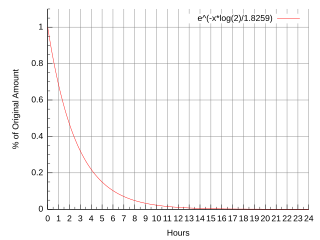 Flotufolastat F-18 gallium | |
| Clinical data | |
|---|---|
| Trade names | Posluma |
| Other names | 18F-rhPSMA-7.3 |
| License data | |
| Routes of administration | Intravenous |
| ATC code |
|
| Legal status | |
| Legal status | |
| Identifiers | |
| CAS Number | |
| PubChem CID | |
| DrugBank | |
| UNII | |
| KEGG | |
| Chemical and physical data | |
| Formula | C63H9918FN12O25Si |
| Molar mass | 1537.3g·mol−1 |
| 3D model (JSmol) | |
| |
| |
Flotufolastat F-18, sold under the brand name Posluma, is a radioactive diagnostic agent for use with positron emission tomography (PET) imaging for prostate cancer. [1] The active ingredient is flotufolastat F-18. [1]
Contents
Flotufolastat F-18 was approved for medical use in the United States in May 2023. [1] [2]













